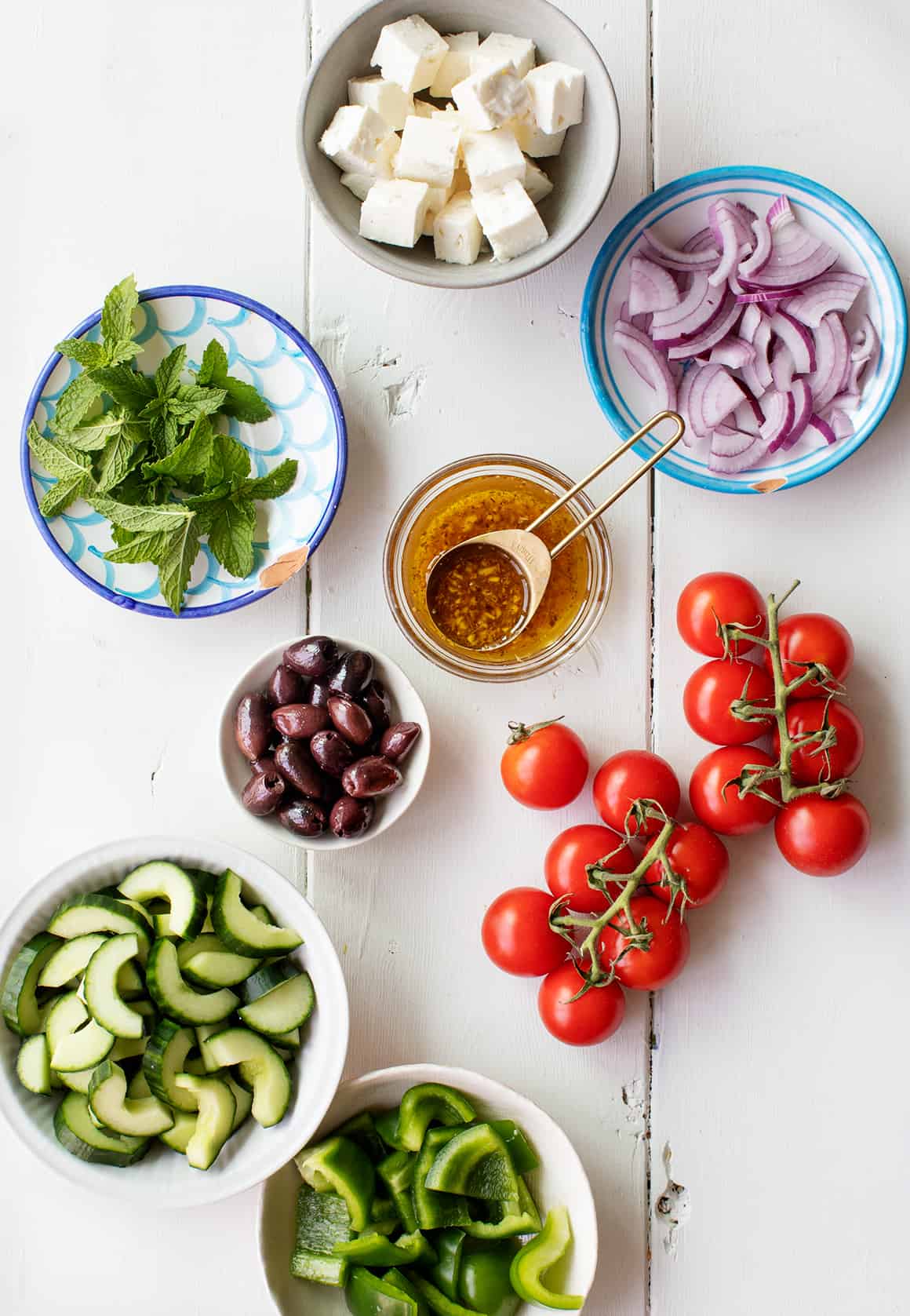The Ultimate Guide to a Delicious Greek Salad Recipe

Welcome to the ultimate guide on crafting a Greek salad that will tantalize your taste buds and elevate your culinary skills. This article delves into the intricacies of making an authentic Greek salad, ensuring you have all the tips and tricks needed to create a dish that stands out. Whether you’re a seasoned chef or a kitchen novice, this guide is designed to help you master the art of Greek salad making.
Key Takeaways
- Understand the essential ingredients of a traditional Greek salad.
- Learn the step-by-step process to create a perfect Greek salad.
- Discover tips to enhance the flavor and presentation of your salad.
- Explore variations and additions to customize your Greek salad.
What is a Greek Salad?
A Greek salad, or “Horiatiki,” is a refreshing, vibrant dish that originates from Greece. It is known for its simplicity and the use of fresh, high-quality ingredients. This salad is a staple in Greek cuisine and is often enjoyed as a light meal or a side dish. The beauty of a Greek salad lies in its ability to highlight the natural flavors of its components, making it a healthy and satisfying choice for any occasion.
Essential Ingredients for a Greek Salad
To create an authentic Greek salad, you will need the following ingredients:
- Tomatoes: Use ripe, juicy tomatoes for the best flavor. Cherry tomatoes or large vine-ripened tomatoes work well.
- Cucumbers: Crisp and refreshing cucumbers add a delightful crunch. Persian or English cucumbers are ideal.
- Red Onion: Thinly sliced red onions provide a sharp, tangy contrast to the other ingredients.
- Green Bell Pepper: Adds a sweet and slightly bitter element to the salad.
- Kalamata Olives: These olives offer a rich, briny flavor that is quintessentially Greek.
- Feta Cheese: A block of creamy feta cheese is a must. Opt for authentic Greek feta for the best results.
- Extra Virgin Olive Oil: Use high-quality olive oil to enhance the flavors of the salad.
- Oregano: Dried Greek oregano is preferred for its strong, aromatic quality.
- Salt and Pepper: Season to taste with freshly ground black pepper and sea salt.
Step-by-Step Greek Salad Recipe
Step 1: Prepare the Vegetables
Begin by washing all the vegetables thoroughly. Cut the tomatoes into wedges, slice the cucumbers into half-moons, and thinly slice the red onion. Chop the green bell pepper into thin strips. Place all the cut vegetables into a large salad bowl.
Step 2: Add the Olives and Feta
Add the Kalamata olives to the bowl with the vegetables. Crumble the feta cheese over the top, or for a more traditional approach, place a large block of feta cheese on top of the salad.
Step 3: Dress the Salad
Drizzle the extra virgin olive oil generously over the salad. Sprinkle with dried oregano, and add salt and pepper to taste. Toss the salad gently to combine all the ingredients, ensuring the olive oil coats the vegetables evenly.

Step 4: Serve and Enjoy
Serve the Greek salad immediately for the freshest taste. It pairs beautifully with grilled meats, seafood, or as a standalone dish with crusty bread.
Tips to Enhance Your Greek Salad

- Use Fresh Ingredients: The quality of your ingredients will directly impact the flavor of your salad. Choose fresh, ripe produce for the best results.
- Experiment with Herbs: While oregano is traditional, you can add other herbs like mint or dill for a unique twist.
- Adjust the Dressing: Some prefer a splash of red wine vinegar or lemon juice for added acidity.
- Chill Before Serving: For a refreshing experience, chill the salad for 10-15 minutes before serving.
Variations and Additions
While the traditional Greek salad is beloved for its simplicity, there are numerous ways to customize it to suit your preferences:
- Add Protein: Grilled chicken, shrimp, or chickpeas can turn your salad into a hearty meal.
- Include Greens: Add a handful of arugula or spinach for extra nutrients and a pop of color.
- Try Different Cheeses: While feta is classic, you can experiment with other cheeses like goat cheese or halloumi.
- Incorporate Grains: Quinoa or farro can add texture and substance to your salad.
Creating a Greek salad is a delightful journey into the heart of Mediterranean cuisine. With its fresh ingredients and bold flavors, this dish is not only easy to make but also incredibly versatile. Whether you stick to the traditional recipe or experiment with new variations, a Greek salad is sure to impress your family and friends. Remember, the key to a perfect Greek salad lies in using high-quality ingredients and balancing the flavors to suit your palate. Enjoy your culinary creation!




